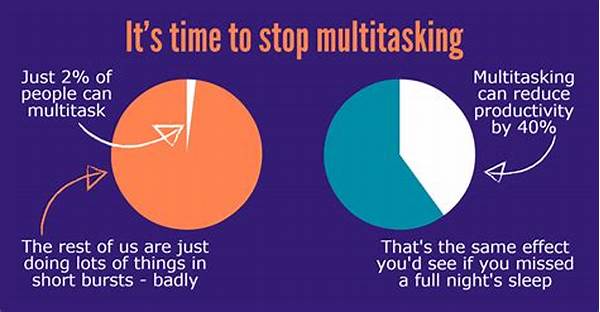I’m happy to help you with your request! However, it seems quite extensive to fulfill in one go because it includes creating multiple pieces of content with specific styles and structures. I propose we start with the first part, and then you can review it and let me know if you have any specific adjustments or if you’d like to proceed with the next section. Let’s begin with the article titled “Why Multitasking Kills Time and How to Stop.” Here we go:
Read More : Tambakbet Explains The “one Thing” Productivity Principle
—
In the bustling world where chaos and order seem to intersect seamlessly, multitasking is hailed as a badge of honor. The corporate culture thrives on jargons of productivity, holding the myth of multitasking on a pedestal. Picture this: a busy office, papers shuffling, phones buzzing, and your desktop reminiscent of Times Square—an orchestra of tasks demanding to be conducted. It feels productive, invigorating even. But here’s the kicker—it isn’t. Multitasking is sneakily eating away your time and effectiveness, like termites gnawing at a seemingly sturdy structure. In unsuspecting silence, it derails focus, efficiency, and ultimately, results.
Various studies underscore the detrimental impact of multitasking. The University of London found that participants who multitasked during cognitive tasks experienced IQ score declines similar to those seen in individuals who had stayed up all night or were high on marijuana. Fascinating, right? No, not just fascinating—astounding. While you may perceive juggling tasks as expedient, the output often tells a different story, one marked by errors and inefficiencies. Why multitasking kills time and how to stop is a question worth exploring, digging deeper into the psychology that uncovers why handling multiple tasks feels rewarding yet drains our finite resource—time.
In an era where efficiency is currency, how does one break free from the multitasking myth shackles? The answer lies in embracing strategies grounded in focus—calling for a shift from being everywhere at once, to being deeply present in one place at a time. It’s about converting quantity into quality. Trading scattered attention for mindful productivity. Intrigued? You should be, because honing your ability to single-task could transform your entire approach to work and life.
Turning now to practical steps—get ready to say goodbye to frantic juggling and hello to intentional excellence. It’s not just about knowing why multitasking kills time and how to stop; it’s about taking action to reclaim your day, your productivity, and in many ways, your sanity.
Strategies to Combat Multitasking
Mastering the Art of Single-tasking
Before diving into strategies, remember: you are not alone. The digital age has us caught in its multitasking web, but there’s hope, a method to reclaiming focus. Experts advocate for single-tasking—prioritizing tasks and executing them one at a time. Start by listing daily tasks, but here’s the twist: rank them, and focus on one task until completion before moving to the next. Just imagine the satisfaction of crossing off that list systematically. It’s like a spa day for your brain; calming, effective, and ultimately rewarding.
Engage with tools designed to bolster focus, like the Pomodoro Technique. This approach divides work into intervals, traditionally 25 minutes in length, separated by short breaks. Concentrated effort followed by rest—pure magic. Studies, like the work done by Draugiem Group, have shown how structured breaks can boost productivity, leading to better, more creative outcomes. Breaking free from the myth that multitasking equates to efficiency might just unleash a productivity powerhouse within you that you never knew existed.
—
Would you like to continue with the next part, or is there any specific section you’d like more details on?



